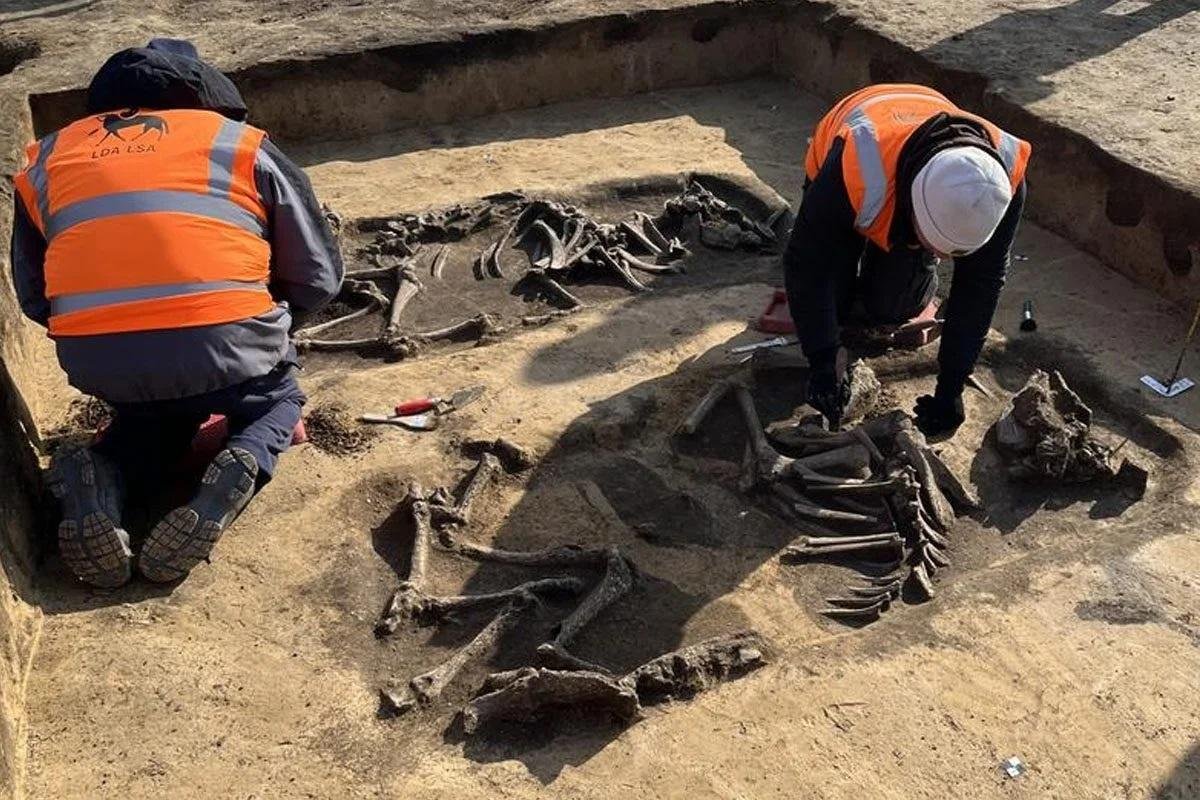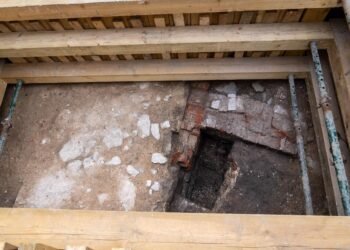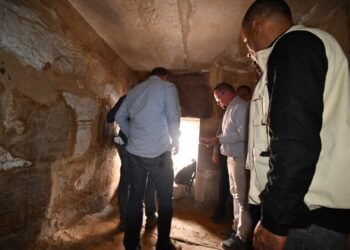During the excavation prompted by upcoming construction activities by US chip manufacturer Intel, archaeologists from the State Office for Heritage Management and Archaeology Saxony-Anhalt (LDA) have unearthed a significant burial landscape dating back to the Neolithic period on the Eulenberg near Magdeburg, Germany.

Dating back approximately 6,000 years, two monumental mounds belonging to the Baalberge Group (4100–3600 BCE) were discovered on the Eulenberg, each covering wooden grave chambers containing multiple burials. These chambers are shaped trapezoidally and measure between 20 and 30 meters in length.
Further analysis indicates that the area remained culturally significant for generations. Around a millennium later, during the Globular Amphora Culture (GAC) period (3300–2800 BCE), the space between the mounds served as a processional route. Along this route, archaeologists found evidence of cattle sacrifices and human burials, highlighting the spiritual and ritualistic significance attributed to the site.
Susanne Friederich, an archaeologist from the State Office for Heritage Management and Archaeology, reflected on the significance of the discoveries: “Our ancestors recreated scenes from their lives here, offering cattle—the guarantee of life—to the gods.”

The presence of Corded Ware Culture burial mounds dating from approximately 2800-2050 BCE further emphasizes the enduring ceremonial importance of the landscape. These mounds, located at a distance of around 600 meters, provide additional evidence of continuous ritual activities spanning different cultural periods.
Xandra Dalidowski, the on-site excavation leader, described the layout of the burial landscape, highlighting the construction of wooden mortuary houses atop the burial sites, which were then covered with earth to form visible mounds. The landscape’s ceremonial significance is further evidenced by the deliberate inclusion of the larger burial mound within a palisade ditch constructed during a later period.
As the excavation nears completion, researchers are eager to conduct further analysis on the unearthed artifacts and human remains. With the impending construction of semiconductor plants by Intel, efforts to preserve and document the archaeological heritage of the site remain crucial.
The State Office for Monument Protection and Archaeology plans to conclude the excavations by the end of April, paving the way for the construction phase.






















